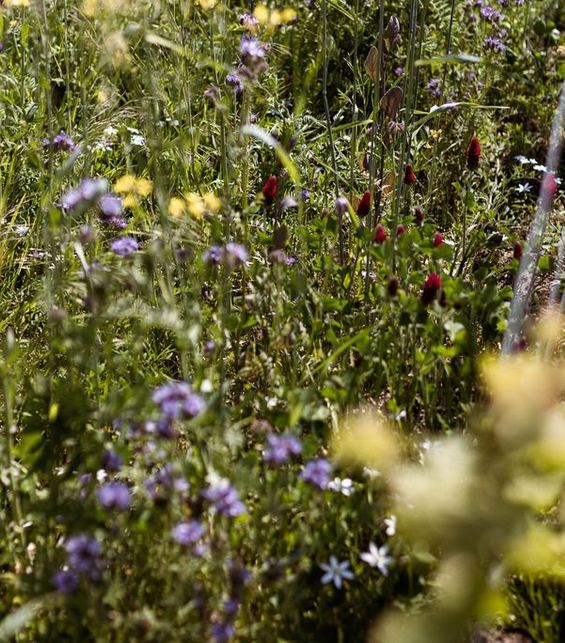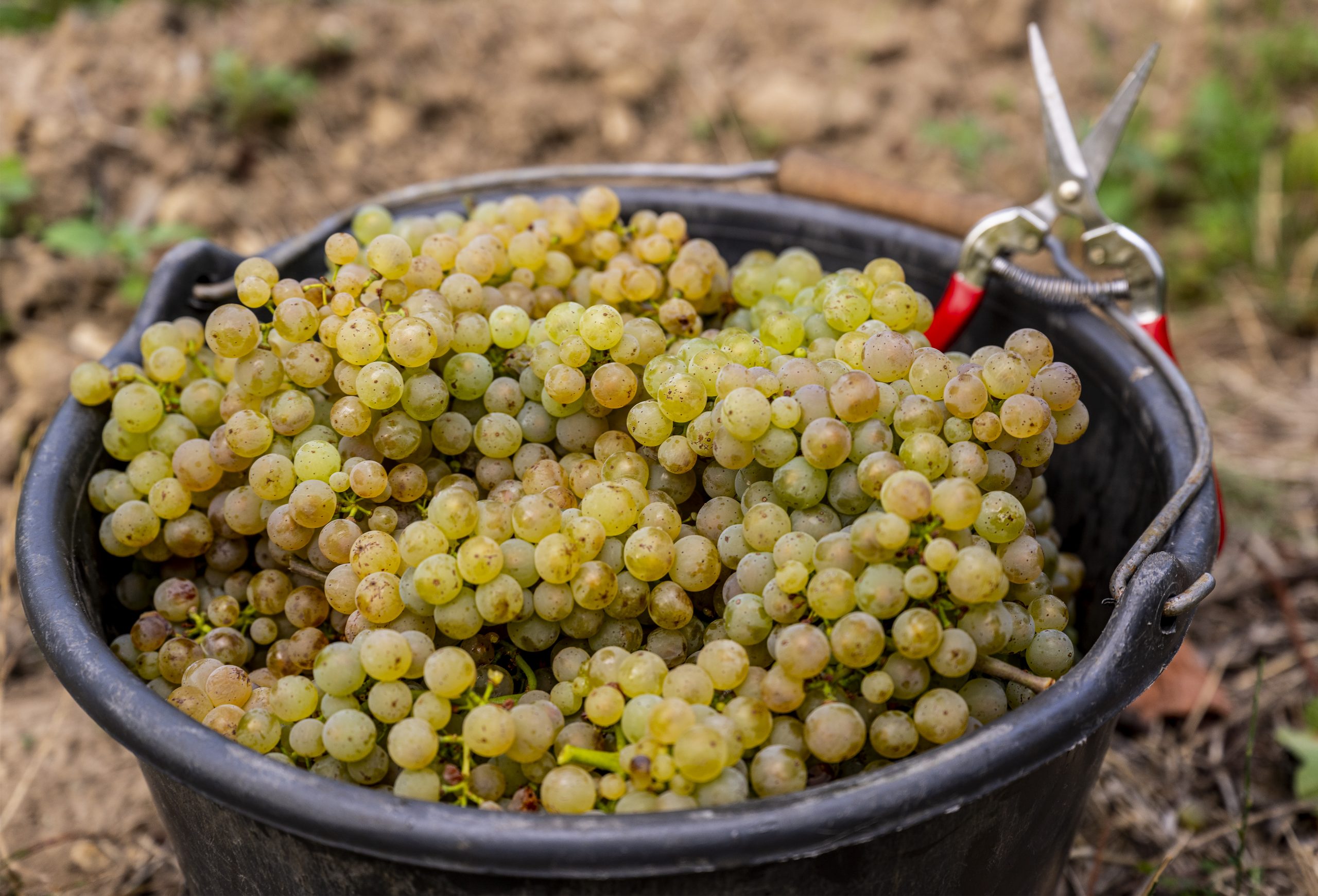Respect & Patience
Our soils are our most valuable asset and the basis of good wines. Respect for the peculiarities of each site, the characteristics of each vintage and grape variety are the basis of our work. The conversion to organically certified viticulture, which began in 2019, was the logical next step.

Lime comes to the surface in the Gimmeldingen Biengarten
For a living and healthy soil and a species-rich vineyard habitat, we pay special attention to the species-rich greening of our vineyards: In summer, we sowed a mixture of a total of 30 species, from buckwheat and crimson clover, to Phacelia and caraway, to dill and coriander. Legumes such as peavine and crimson clover naturally provide fertilizer for us. Sunflowers and rapeseed serve as humus suppliers and provide shelter, habitat and food for many insects, a growing number of field hares and, if you’re lucky, you might even see a pheasant once in a while.
On the Phacelia, the bumblebees like to fold up their wings to sleep in the evening – the greening not only looks good, but you can feel that it is good for the vineyard and all the beneficial insects that live in it. In addition, the greening loosens the soil, improves its water storage capacity, builds biomass, and urges the vines to drive their roots deeper into the soil through water competition.
Colorful mixture: Phacelia, crimson clover, rapeseed and star of Bethlehem in the vineyard

A miracle of nature: Valuable compost for our plots is created from our pomace, cattle manure from a farmer friend and green cuttings from a Gimmeldingen nursery. Just a few centimeters below the straw cover, the compost is really warm and we now let nature do its work. Together with the species-rich greenery, the compost serves as a humus supplier, water reservoir and nutrient for soil organisms.

Hans-Christoph checking the compost in the spring
PASSION
Good wines are made in the vineyard and are only accompanied in the cellar during maturation. It requires many hours of vineyard work and a perfect selection of grapes during harvest. This is possible in this precision only with the hand harvest. We are up to three times in succession in individual vineyards to harvest the grapes in different quality and maturity stages separately from each other.

The result after a year of hard work: perfect grapes
We work with skin contact, spontaneous maceration and clarify the freshly pressed must by natural sedimentation. Some barrels are already warm and wildly fermented after one week, the neighboring barrel may ferment until February. Patience and restraint also apply in the cellar – spontaneous and slow fermentations : nature gets the time it takes. This is how we feel committed to the original idea of natural wine.
Our curiosity drives us. Every vintage is different – nature writes the script and we adapt. So we constantly question ourselves and an answer, for example, to the way of removing leaves of the grape zone in one year is completely different from another year. Each parcel is fermented separately in its own barrel – whether steel tank, barrique or piece barrel made of Palatinate oak. This diversity in the cellar allows us a radical selection of the best barrels for filling.

Florian and Hans-Christoph tasting the Pinot Noir barrels
Spontaneous fermentation with wild yeasts was not yet an issue until 2019, and the wooden barrels of Hans-Christoph’s grandfather were well preserved but little used. Going new ways is not necessarily connected with newer and more modern technology but is often also a return to the roots of quality viticulture.

The CO2 released by fermentation pushes through the pipe on the wooden barrel

